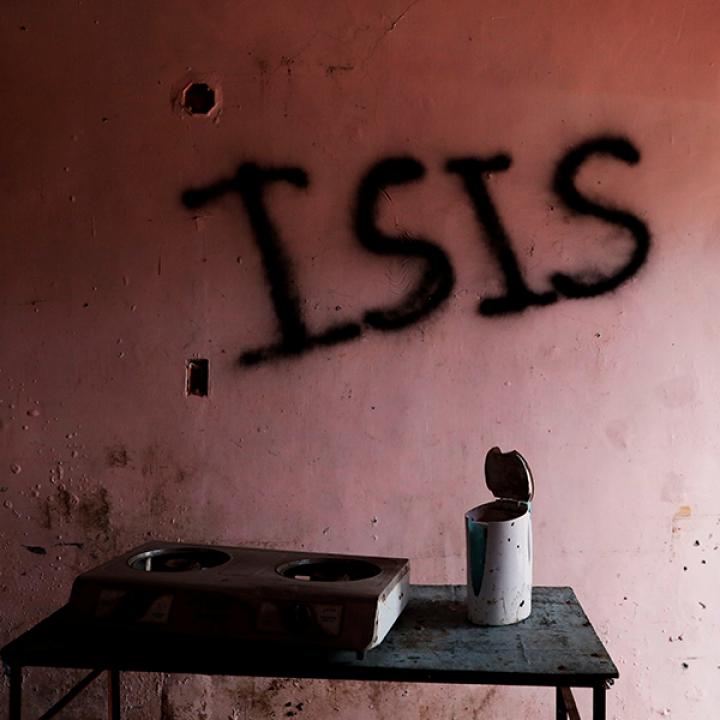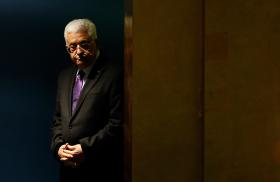
- Policy Analysis
- Fikra Forum
Polling in ISIS-Controlled Territories: A Response

Public opinion polls are considered one of the most important means by which one can understand the people, their opinions, and any trends within them. Any flaws in methodology or lapses in professionalism will create potentially major flaws in understanding. Yet it is exceedingly difficult to conduct polling surveys in an area that lacks basic security, especially in an area under the control of the Islamic State of Iraq and Syria (ISIS). Consequently, the report recently prepared by the IIACSS and posted by The Washington Institute contains a large number of claims that appear contentious and weak based on my years of experience in the field of Iraqi public opinion.
This poll, produced by the Independent Institute for Administration and Civil Society Studies (IIACSS), centered in Amman and Baghdad, was unable to provide convincing evidence to confirm its bold title: “Combating Da’esh: We Are Losing the Battle for Hearts and Minds.”
The challenges of the logistics needed to perform such a poll call into question aspects of the methodology implemented. The study involved conducting 200 face-to-face interviews with people who responded in June. Another sample constituting 120 respondents was selected through the snowball technique in Mosul. The problem here is that it is almost impossible to conduct such interviews due to logistical and security concerns, especially since ISIS is well known for killing any journalists or individuals who do not serve them or abide by their rules. There are many other questions regarding the accuracy of the results that remain unanswered. Has the respondents’ permission been taken to conduct these interviews? Furthermore, how did the researchers make sure that the respondents, if they truly exist, were not ISIS propagandists?
These questions are valid because the amount of refusals to respond is relatively high in normal circumstances in Iraq, since the majority of respondents suspect the authenticity of researchers. As this is the case for the rest of Iraq, the question stands: how did they respond in an ISIS-controlled area? In reality, such a methodology cannot be applied in an ISIS-held area because the terrorists group does not allow any independent media or research in its territories. In fact, ISIS is responsible for hampering media work and assassinating seventeen journalists living inside its territories according to the Committee to Protect Journalists and even outside its areas such as the case of Naji Jerf in Turkey.
The sample frame of this poll, even after accounting for methodological issues, is highly self-selective. The most important sample that needs to be examined for understanding views of life under ISIS is those who have fled the provinces under ISIS’ control, now relocated in Baghdad, Kurdistan, and elsewhere. It is estimated that around 4 million internally displaced people are currently living in Iraq, according to the Internal Displacement Monitoring Center (IDMC). The majority of civilians who stayed and served as potential polling participants are either too poor, sick, or old to move out of ISIS-controlled territory. Other civilians and potential respondents have had to pledge their allegiance to ISIS in order to survive, while the rest believe in ISIS’s ideology.
There are also questions regarding the phrasing of the polling queries themselves.For example, a question asks about concerns regarding the “Popular Mobilization Forces” and “Religious Shiite Militias,” presenting them as two separate options. In fact, they refer to the same Shiite entity.
Additionally, the poll poses a question on conspiracy theories: “Some say that there has been a conspiracy by the U.S. government to support ISIS. What do you think?” is a question suitable for elites rather than ordinary people. Moreover, it is difficult to believe the results (50 percent disagreement, 41 percent agreement in June 2014; 37 percent disagreement, 60 percent agreement in December 2015) because belief in conspiracy theories is widespread in both Iraq and the wider Middle East as well. This phenomenon is well documented by Matthew Gray in “Explaining Conspiracy Theories in Modern Arab Middle Eastern Political Discourse” (2008) and Liz Fekete in “The Muslim Conspiracy Theory and the Oslo Massacre” (2012).
The recent victories in Anbar province against ISIS have underlined that the claim that “We are Losing the Battle for Hearts and Minds” should not hold too much credibility.


